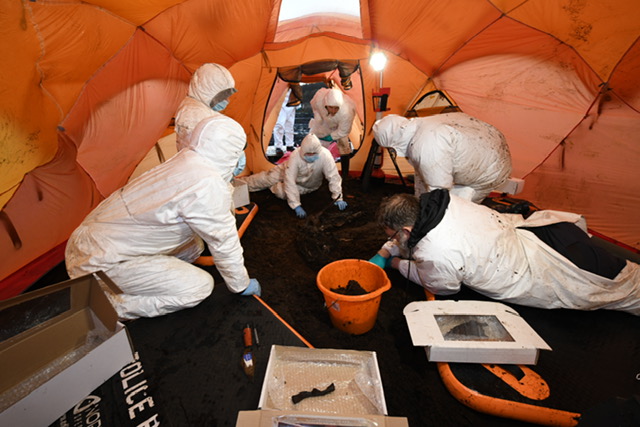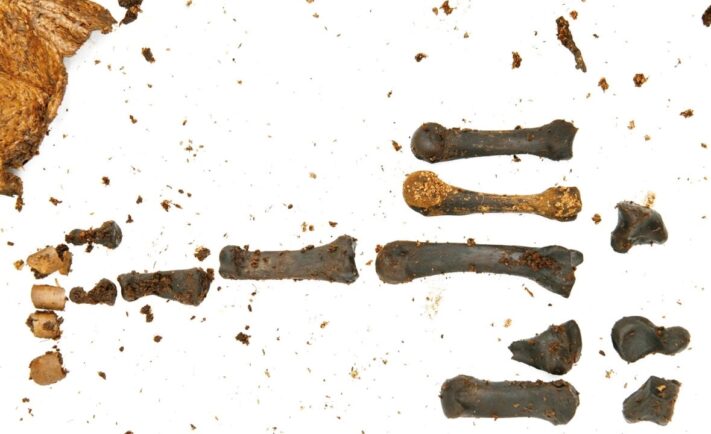 HUMAN remains dating back more than 2,000 years have been recovered by the PSNI from a bog in Co Derry.
HUMAN remains dating back more than 2,000 years have been recovered by the PSNI from a bog in Co Derry.
The discovery was made during excavations, after archaeologists were alerted to human bones on Bellaghy peatland in October 2023.
It is thought the remains could be those of a teenage boy.
The PSNI say it is a “unique archaeological discovery for Northern Ireland”.
It explained that the remains had been carbon dated to “as old as 2,000-2,500 years”.
Detective Inspector Nikki Deehan said excavations “first uncovered a tibia and fibula and a humerus, ulna, and radius bone relating to the lower left leg and right arm respectively”.
 “Further investigation revealed more bones belonging to the same individual,” she added.
“Further investigation revealed more bones belonging to the same individual,” she added.
“About five metres south of the surface remains, the bones of a lower left arm and a left femur were located protruding from the ground.
“Further examination of the area between the main body and the surface remains located additional finger bones, fingernails, part of the left femur and the breastbone.
“A post mortem was carried out by a certified forensic anthropologist and determined that the individual was possibly a male aged between 13-17 years old at the time of death.”
She said that “little is known so far about the individual’s cause of death”, but that “unlike some other ‘bog bodies’ the individual’s skeleton was well preserved and also had the presence of partial skin, fingernails of the left hand, toenails and possibly a kidney”.
“The well-preserved nature of the body meant radiocarbon dating could be used to ascertain the time of death,” she said.
“The radiocarbon dates have placed the time of death between 2,000 – 2,500 years ago, approximately 500BC.
“This is the first time radiocarbon dating has been used on a bog body in Northern Ireland, and the only one to still exist, making this a truly unique archaeological discovery for Northern Ireland.”
The radiocarbon dating was conducted at the 14Chrono Centre, which is part of Queen’s University Belfast.
Dr Alastair Ruffell from the university said it conducted two phases of high-resolution, ground-penetrating radar survey at the site.
“The remains were discovered at approximately one metre below the current land surface which matches the radiocarbon estimates,” he added.
“In addition, they were amongst a cluster of fossil tree remains suggesting that the body may have died or been buried in a copse or stand of trees, or washed in.”
John Joe O’Boyle, chief executive of Forest Service in NI, said the ancient bog body was discovered on land owned by the Department of Agriculture and it was now working with National Museums NI to transfer it to them so that they can continue with further examination and preservation of the remains.
“I hope, in due course, the find will help us all understand better something of our very early history,” he added.
“It certainly adds an important chapter to the historical and cultural significance of this hinterland and archaeological discoveries of bog bodies across Europe.”
This excavation is one of many investigations carried out by the dedicated Body Recovery Team within the PSNI.
The team has previously assisted in recovering and examining human remains, including recovering those of missing persons up to almost three decades after the individuals went missing.
Tags:




